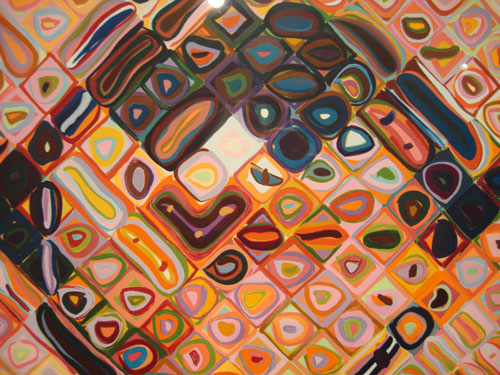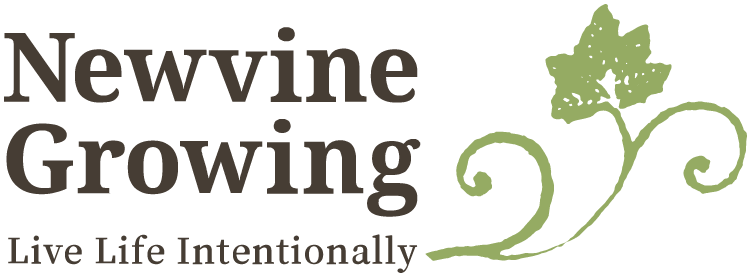Editor’s note: This post is by far the most popular on my blog, thanks to people landing here searching for Chuck Close. If you are interested in art and painters, please check out some of my other posts with those related tags. In the green bar on the right, scroll down until you see “tags” and click on any word you see to read more. Thanks for stopping by!
Netflix revolutionized video rental with its automated home delivery of DVDs, flat monthly charges, no late fees and social networking with other members.
Now that they’ve forced Blockbuster to play catch up with a me-too home delivery plan, Netflix continues to innovate with watch-it-now content online and the announcement this week of a Netflix-enabled TV, further simplifying immediate viewing when you haven’t thought ahead to get a physical DVD.
In an interview with CNBC, Netflix CEO Reed Hastings says this isn’t just his latest idea — it’s where he’s been headed all along. It’s why they’re called Netflix instead of Movies by Mail or some such.
When Netflix was founded in 1997 it was all about rental-by-mail, but CEO Reed Hastings told me in an exclusive interview, his goal has always been to make Netflix the leading company for subscription streaming video.
Think about that for a minute: while Netflix was completely transforming the way an industry worked, it already had its eye on the next transformation. While we were all marvelling over the next big thing, its CEO was already thinking about the next next big thing.
That was before YouTube. Before high-speed Internet connections became commonplace at home. Before the dot-com bubble burst.
There’s a business cliche that if the railroads had thought of themselves as transportation companies instead of merely railroad companies, they could have moved into auto manufacturing before the Big Three got there. (Not that that’s looking so great now, but you get the idea.)
I think Chuck Close gets it. My husband, John Tebeau, is an artist — a painter, a cartoonist — and he was excited to take me to see a documentary on painter Chuck Close, someone whose work he loves.
Close is a painter who did incredibly detailed portraits like a well-known one of Philip Glass. Then a blood clot put him in a wheelchair and took away his ability to use his hands like he had.
For a guy whose paintings were so real that people thought they were photos, that’s a devastating loss. But instead of thinking of himself as a hyper-realist painter, Close and his wife kept a broad view — he’s a painter. They talked to CBS:
“I was scared to death,” he said. “I think I always thought I was going to make it. I was scared of living trapped in a body that didn’t work.”
His wife convinced doctors that encouraging him to paint again would help her husband recover, physically and mentally.
“And we began to work with my occupational therapist in the hospital,” Close said. “Tried to get the orthotic devices, something that I could use to hold the brush. And they built me a wheelchair-accessible easel. I used occupational therapy for what I thought it was supposed to be — a way to get back to your occupation. And I started to paint while I was still in the hospital.”
His new work feels connected to that hyper-realistic work, but interpreted through a lens of abstraction. He still has the same eye, but he paints with a brush strapped to his wrist so the way it comes out has to be different. And some people say it’s his best work. It’s hard to appreciate on his Web site because the images are so small, but here in a close up, you can see that his paintings are almost like those pictures where you squint long enough and see the Statue of Liberty.

But here’s how the artist himself describes the transformation.
“What’s changed is perhaps a slightly brighter palate,” he said. “A more celebratory nature to the work. Because I was just so happy to be able to get back to work, and to find a way to work again. The other thing is that there are so many other things that I used to love to do, that I put a lot of time and energy in doing. I used to mow the lawn, I cut the brush, and dug holes and chopped down trees and walked on the beach and roughhoused with my kids — all of this stuff that I can’t do any more. Thankfully, if I’m only gonna be able to still do something that I used to do, I’m pretty lucky that it turned out to be painting.”
I think the common thread here is that if you define yourself too narrowly, you can’t evolve in the ways necessary to your success or survival. If Netflix only thought of itself as delivering DVDs, maybe Tivo or Comcast would be leading the charge on watch on demand movies. If Chuck Close gave up when he couldn’t paint like he used to, he would have missed out on decades of new critically acclaimed work.
How do you give yourself room to evolve? Personally or professionally, how do you define yourself in a way to leave room for change?


12 Comments
jtebeau
I think the doc we saw was “Chuck Close – A Portrait in Progress” and is available on DVD,
Yanira Serrett
Each time I read this I discover some thing I previously overlooked! These suggestions are invaluable to me as a person.
Leave a reply